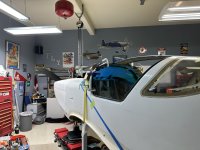Asking for a friend not on this forum. How difficult or is it possible to convert an rv6/7 tip up canopy to a slider canopy. That is his preference, slider.
I built an F1 rocket slider so I can translate the experiences here to him.
Thanks in advance and blessed very happy New Year.
Good luck to all on their RV15 projects and to Vans bringing it to market.
V/R
Howard Rhodes
I built an F1 rocket slider so I can translate the experiences here to him.
Thanks in advance and blessed very happy New Year.
Good luck to all on their RV15 projects and to Vans bringing it to market.
V/R
Howard Rhodes





